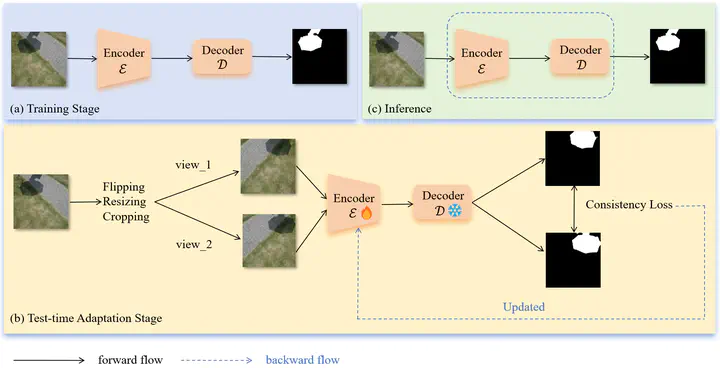Test-Time Intensity Consistency Adaptation for Shadow Detection
 Model Architecture
Model ArchitectureAbstract
Shadow detection is crucial for accurate scene understanding in computer vision, yet it is challenged by the diverse appearances of shadows caused by variations in illumination, object geometry, and scene context. Deep learning models often struggle to generalize to real-world images due to the limited size and diversity of training datasets. To address this, we introduce TICA, a novel framework that leverages light intensity information during test-time adaptation to enhance shadow detection accuracy. TICA exploits the inherent inconsistencies in light intensity across shadow regions to guide the model toward a more consistent prediction. A basic encoder-decoder network is first trained on a labeled dataset for shadow detection. Then, during testing, the model is fine-tuned on each test sample by enforcing consistent intensity predictions between two augmented versions of the input image. This consistency training specifically targets both foreground and background intersection regions of the augmented images, leveraging global image information for robust adaptation. Extensive evaluations on the ISTD and SBU shadow detection datasets demonstrate that TICA significantly improves performance compared to existing state-of-the-art methods, achieving superior results in terms of BER.